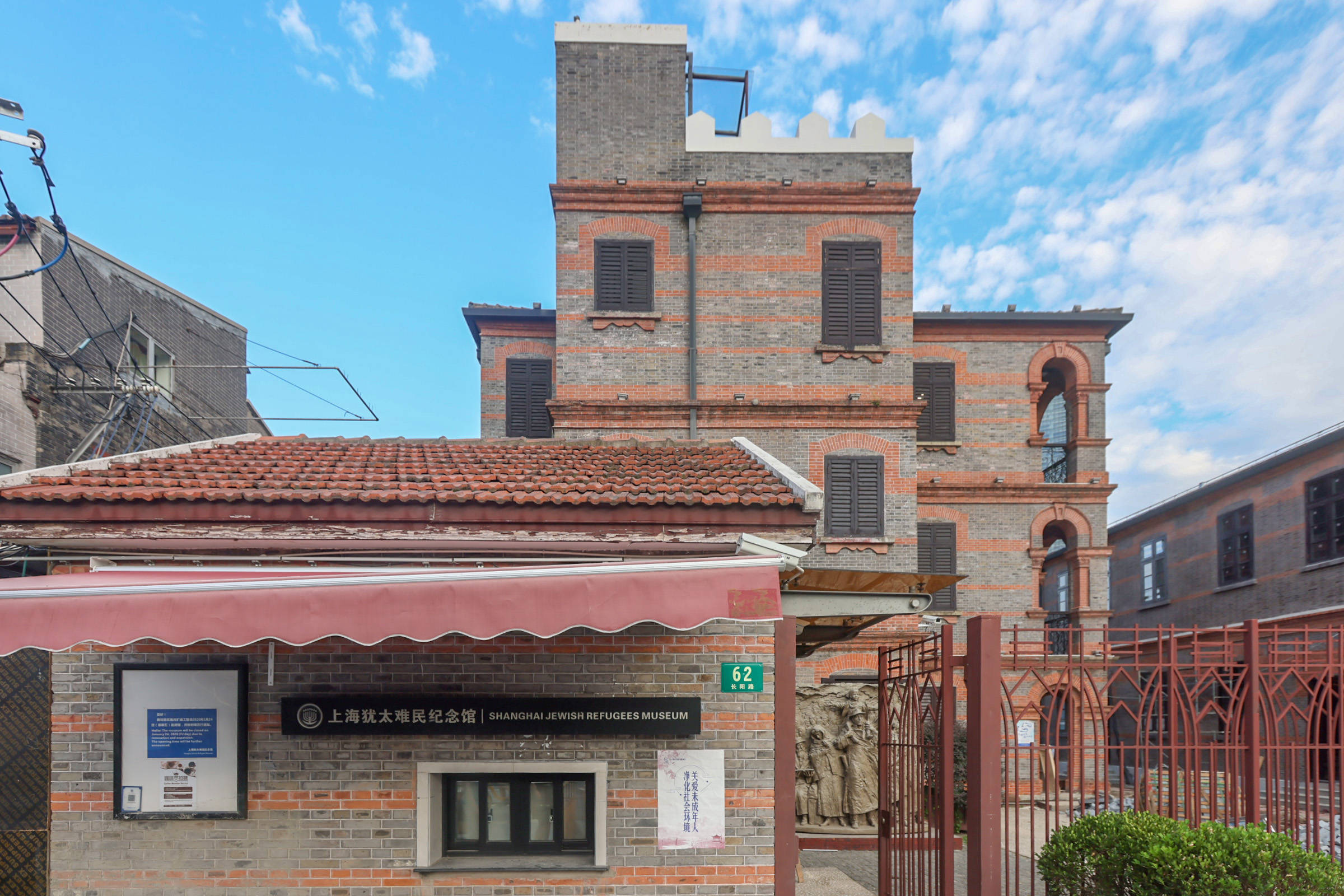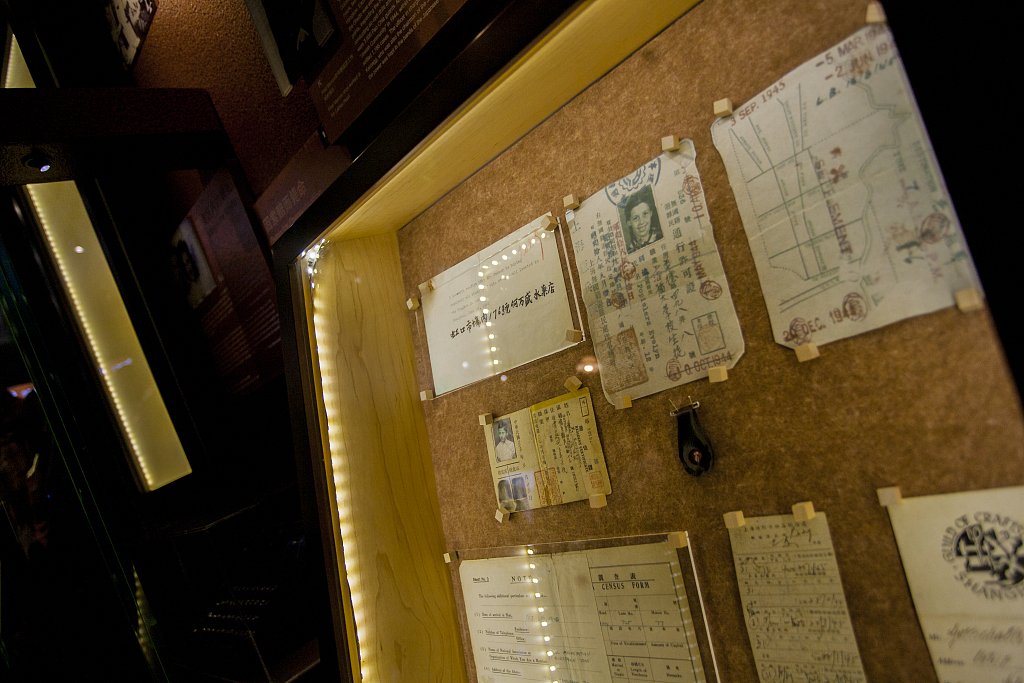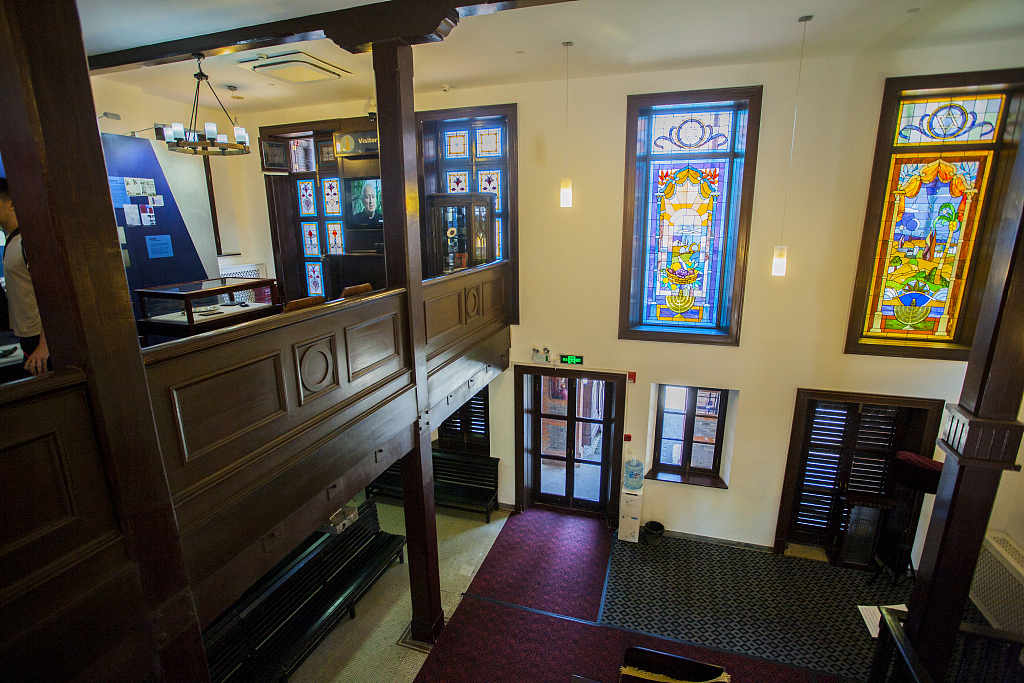After nearly two years of expansion, the Shanghai Jewish Refugees Museum, which witnessed some 20,000 Jewish refugees flood into Shanghai to seek sanctuary during World War II, will open to public again by the end of this year, said its curator Chen Jian on Tuesday.
Chen said the total area will be expanded from 900 square meters to 4,000 square meters, while the total exhibits are expected to increase from 150 to more than 1,000.

An external view of the Shanghai Jewish Refugees Museum, Shanghai, China. /Xinhua
An external view of the Shanghai Jewish Refugees Museum, Shanghai, China. /Xinhua
Located on the site of the former Ohel Moshe Synagogue that was built in 1927, the museum has been a constant reminder of how this Chinese city saved tens of thousands of Jews fleeing the Holocaust.
The synagogue-turned museum was launched in 2007 and started its expansion project in 2018.
After the expansion, it will showcase more historical artifacts, among them a number of photographs, refugee passports and copies of the newspaper Shanghai Jewish Chronicle, allowing visitors to better understand the history of Jewish refugees in Shanghai during World War II.

Some items on display at the Shanghai Jewish Refugees Museum, Shanghai, China, May 27, 2017. /CFP
Some items on display at the Shanghai Jewish Refugees Museum, Shanghai, China, May 27, 2017. /CFP
According to Chen, a wedding dress worn by Betty Grebenschikoff during her wartime sojourn in Shanghai returned to the museum on Tuesday after cleaning and maintenance.
When the museum reopens, the dress will be on display along with other items, some of which will meet the public eye for the first time.
Grebenschikoff is a Jewish refugee now living in the United States. She donated the attire, which has been used by her and her children and seen tough times, to the museum in 2013.

The interior view of the Shanghai Jewish Refugees Museum, Shanghai, China, May 27, 2017. /CFP
The interior view of the Shanghai Jewish Refugees Museum, Shanghai, China, May 27, 2017. /CFP
Shanghai, before and during the period, was a safe harbor to tens of thousands of European Jewish who moved to the city to escape Nazi atrocities.
They mostly settled in an area along the northern part of the Suzhou River, which was called the Restricted Sector for Stateless Refugees or the Shanghai Ghetto.
(Cover: The Shanghai Jewish Refugees Museum is located in Hongkou District, Shanghai, China. /CFP)